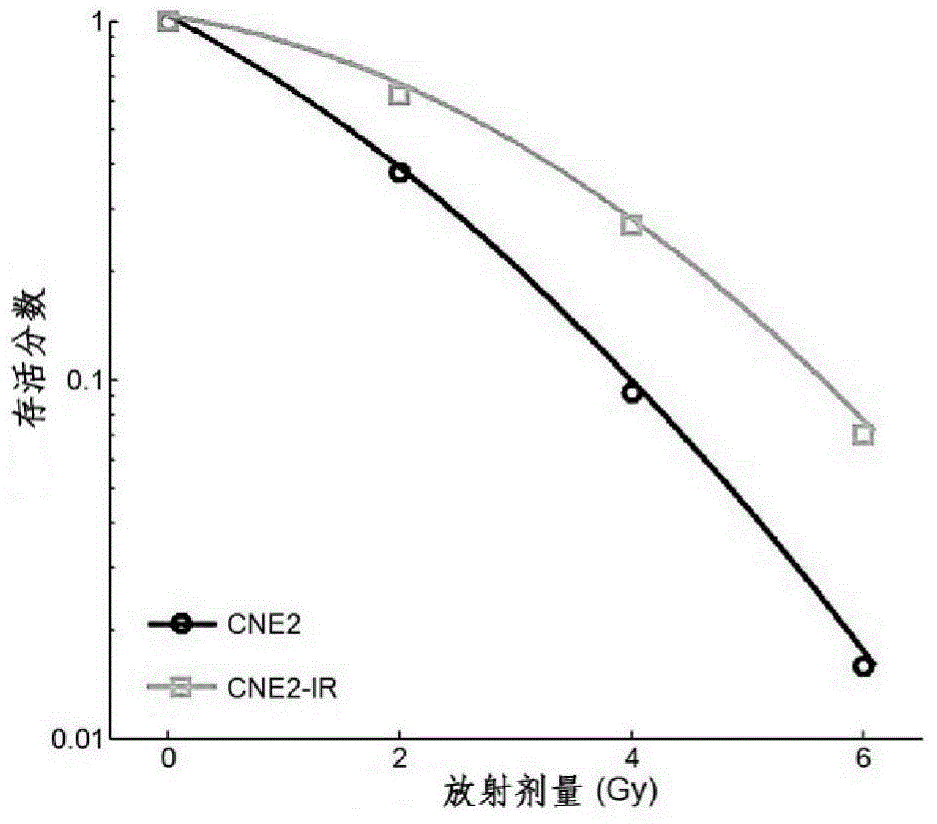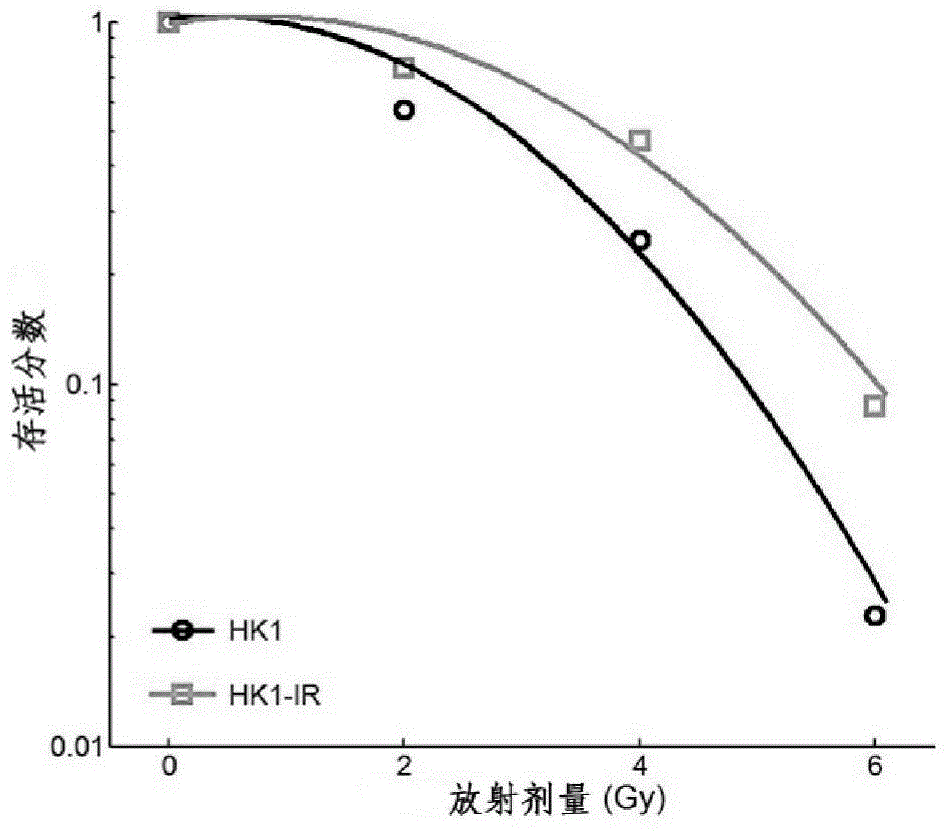Molecular marker miR-504 for regulating radiation resistance of nasopharyngeal carcinoma
A technology of mir-504 and molecular markers, applied in the field of new molecular markers, can solve the problems of unclear molecular biological mechanism, abnormal structure and function of tumor cell mitochondria, etc., and achieve easy mass screening, convenient sampling, and high specificity Effects on Sex and Sensitivity
- Summary
- Abstract
- Description
- Claims
- Application Information
AI Technical Summary
Problems solved by technology
Method used
Image
Examples
Embodiment 1
[0043] Example 1. Identification of radioresistant phenotypes of nasopharyngeal carcinoma radioresistant cell lines.
[0044] Plate colony formation assay was used to investigate whether the radioresistant nasopharyngeal carcinoma cell lines were radioresistant. Disperse the monolayer cultured cells in the logarithmic growth phase into a single cell suspension by general passage method, and count them. Dilute the cell suspension in gradient multiples, inoculate in a culture dish or a culture plate at an appropriate cell density according to the purpose of the experiment, and then perform radiation treatment with different doses (0, 2, 4, 6Gy), place at 37°C, 5% CO 2 Continue culturing in the incubator for 12-14 days. When colonies visible to the naked eye appeared in the Petri dish, the culture was terminated. Discard the culture medium, wash carefully with PBS or DHanks solution 2-3 times, add methanol 5ml to fix for 15min, stain with 0.1% crystal violet or Giemsa staining...
Embodiment 2
[0046] Example 2. The expression of miR-504 is up-regulated in nasopharyngeal carcinoma radioresistant cell lines.
[0047] The expression of miR-504 was detected by Taqman fluorescent quantitative PCR method. The TaqMan probe method is a highly specific quantitative PCR technology, and its core is to use the 3′→5′ exonuclease activity of Taq enzyme to cut off the probe and generate a fluorescent signal. Since the probe is specifically bound to the template, the strength of the fluorescent signal represents the amount of the template. In the quantitative PCR reaction system of the TaqMan probe method, a pair of PCR primers and a probe are included. The probe only specifically binds to the template, and its binding site is between the two primers. The 5' end of the probe is labeled with a reporter group (Reporter, R), such as FAM, VIC, etc., and the 3' end is labeled with a fluorescent quencher group (Quencher, Q), such as TAMRA, etc. When the probe is intact, the fluorescen...
Embodiment 3
[0049] Example 3. miR-504 promotes the proliferation of nasopharyngeal carcinoma cell lines and their resistance to radiation, and inhibits the apoptosis of nasopharyngeal carcinoma cell lines.
[0050] MTS method was used to detect the effect of miR-504 on the proliferation of nasopharyngeal carcinoma cell lines. MTS indirectly reflects the proliferation ability of cells by detecting cell viability. MTS is an improved reagent based on MTT, which contains a new type of tetrazole compound (MTS) and an electron coupling agent (phenazineethosulfate, PES). PES has enhanced chemical stability, which allows it to be mixed with MTS to form a stable solution. MTS is bioreduced by cells into a colored formazan product, which can be directly dissolved in the culture medium. This conversion is accomplished by the action of NADPH or NADH produced by dehydrogenases in metabolically active cells. During detection, read the absorbance value at a wavelength of 490nm on a microplate reader ...
PUM
 Login to View More
Login to View More Abstract
Description
Claims
Application Information
 Login to View More
Login to View More - R&D
- Intellectual Property
- Life Sciences
- Materials
- Tech Scout
- Unparalleled Data Quality
- Higher Quality Content
- 60% Fewer Hallucinations
Browse by: Latest US Patents, China's latest patents, Technical Efficacy Thesaurus, Application Domain, Technology Topic, Popular Technical Reports.
© 2025 PatSnap. All rights reserved.Legal|Privacy policy|Modern Slavery Act Transparency Statement|Sitemap|About US| Contact US: help@patsnap.com



